Seven Sisters Development Assistance
Capacity & Institution Building
Capacity Building
At SeSTA, we believe in empowering communities by enhancing their skills, knowledge, and leadership abilities. Our capacity-building initiatives focus on strengthening women-led institutions, improving sustainable livelihood practices, and fostering collective action. Through hands-on training, digital literacy programs, and leadership development, we equip rural communities with the tools needed for long-term self-reliance. By integrating climate-resilient agriculture, financial inclusion, and entrepreneurship, we enable individuals and groups to drive meaningful socio-economic change. SeSTA’s holistic approach ensures that communities are not just beneficiaries but active participants in their own development journey.
Community Cadre Development
Krishi Sakhi
Pashu Sakhi
Adhikar Sakhi
Data Collector
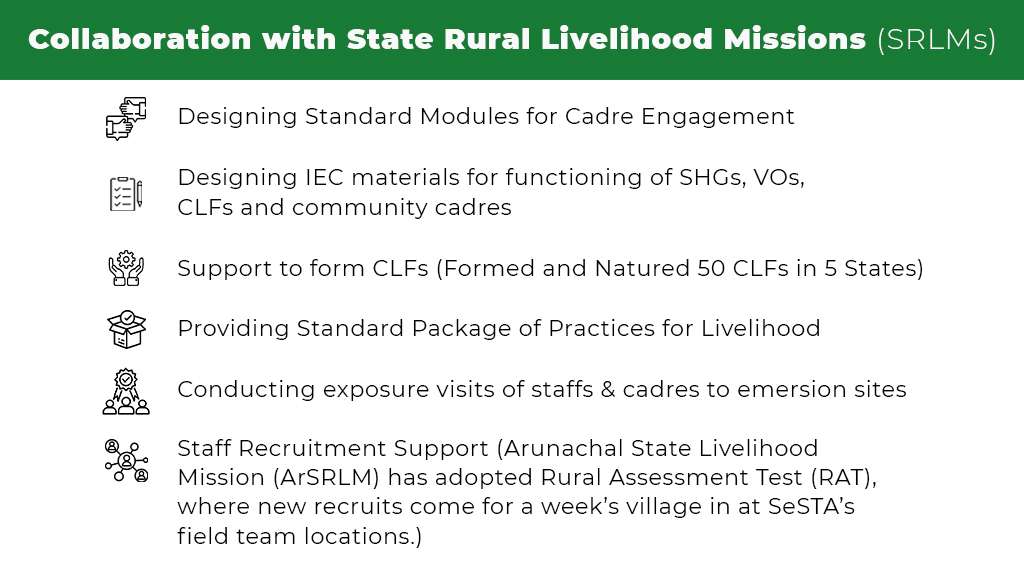
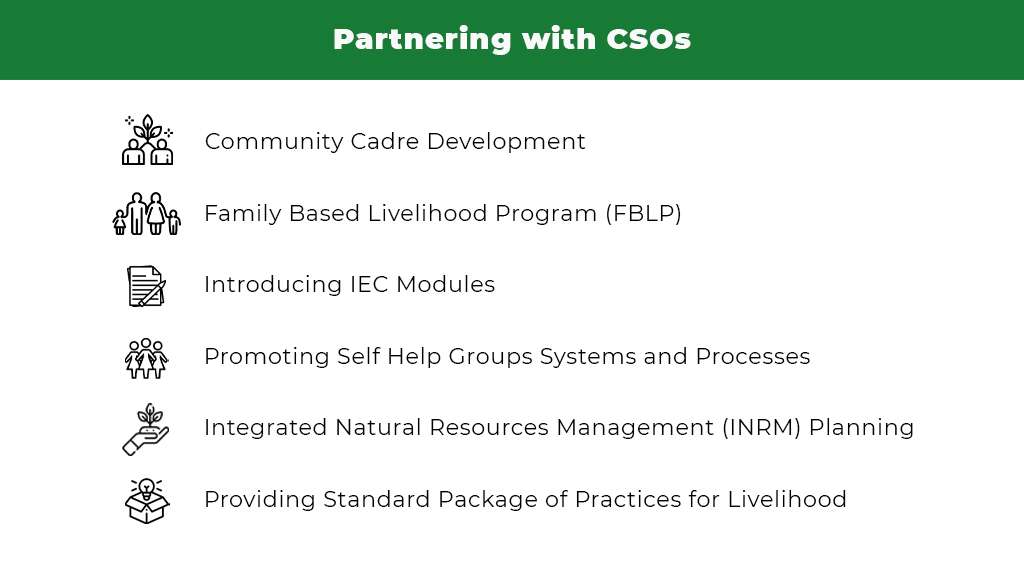
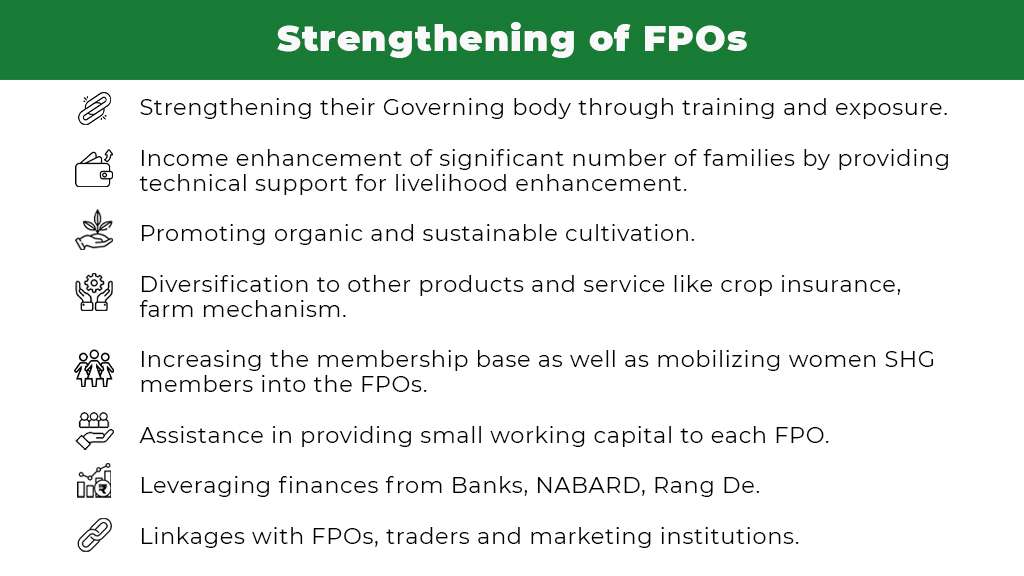
Institution Building
SeSTA focuses on strengthening community-led institutions to ensure long-term sustainability and collective empowerment. By nurturing self-help groups (SHGs), producer organizations, and federations, we equip rural communities with the skills to manage resources, make informed decisions, and advocate for their rights. Our approach emphasizes governance, financial management, and leadership development, enabling these institutions to function independently and drive socio-economic change. Through capacity-building initiatives, market linkages, and policy advocacy, we help grassroots organizations become self-reliant, resilient, and capable of addressing local challenges effectively.
Self Help Group (SHG)
Self Help Group (SHG) it is a democratic institution owned and managed by women. It is an association of 10 to 20 women from similar socio-economic background and a voluntary effort to improve their economic and social wellbeing.
Reasons to promote SHGs
- Organizes poor around their own resources.
- Savings and credit are a livelihood intervention in itself.
- It smoothens consumption and finances existing livelihoods.
- Prepares members for further livelihood options.
- Mobilise finance from banks for livelihoods.
- Empowers women and builds leadership skills
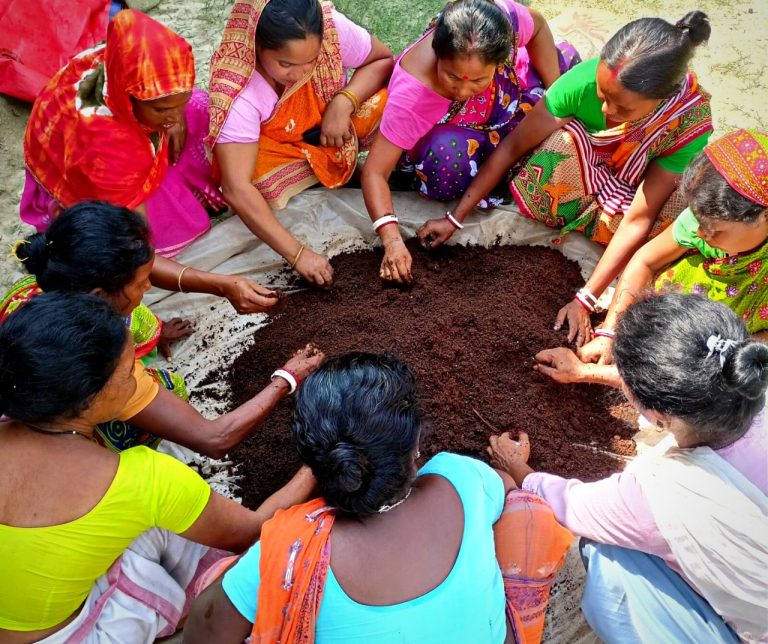
Village Organization (VO)
Once the SHG groups are established, it mobilizes the SHGs to form Village Organization (VO) comprising of 10-15 SHGs from the same village or nearby villages. The objective to have VO meetings is to act as a pressure group uniting SHGs for addressing various issues related to atrocities on women, social evils, SHGs, health and governance.
The VO acts as a
Forum for peer learning, mutual support, monitoring and evaluation.
Integrating, interfacing and cross learning forum.
An opportunity to stay in touch with the groups.
Forum for cost sharing and building solidarity
- A platform for collective action and advocacy
- Strengthening linkages with external stakeholders
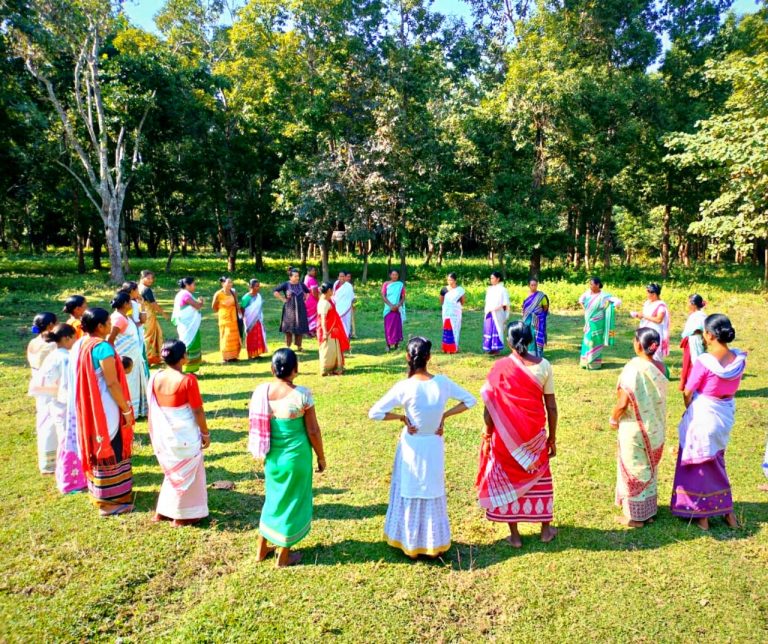
Cluster Level Federation (CLF)
A Cluster Level Federation (CLF) is promoted by SeSTA in close association of the SRLMs, which is consist of all the VOs in the GP. It acts as a platform for sharing of experiences of SHGs and to extend mutual support to improve the overall performance of SHGs. The CLF will create voice and space for the poor in the village and help initiate development intervention for poverty reduction. SeSTA has formed and nurtured 50 CLFs across 5 states of NE.
The role of CLF are as follows
- Platform for sharing experiences and learning
- Mobilization of left-out and vulnerable groups
- Preparation for diversified livelihood options
- Regular review and effective monitoring
- Facilitation of pro-poor planning processes
- Bridge connecting SHGs with key stakeholders
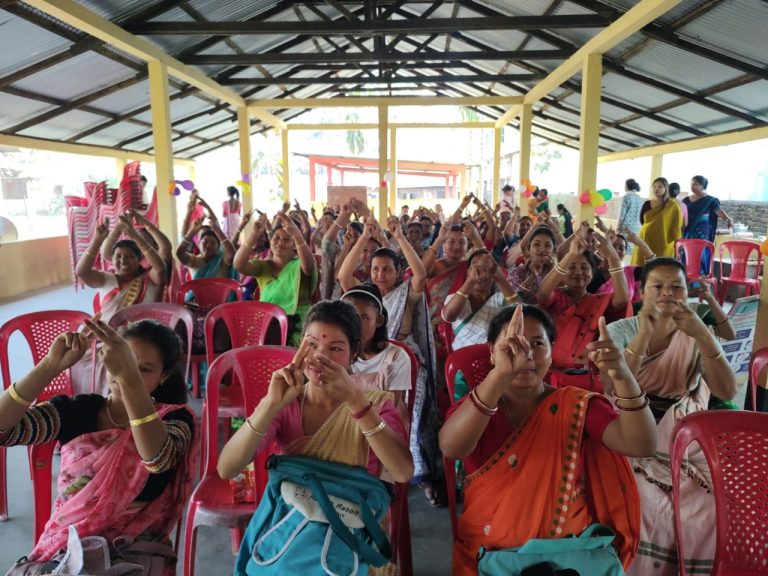
Producer Group (PG)
Producer Groups are mobilized with a focused intention to increase production of different agricultural and livestock products. SeSTA promotes PGs where women members with common interest with available resources in a suitable geography are clubbed together to participate in training and handholding support for livelihood activities. The idea is to collectivize women under one umbrella for immediate access of support, trainings, maintenance of books and accounts and to generate a maximum profit for the members
Producer Groups work for
- Platform for sharing experiences and learning
- Mobilization of left-out and vulnerable groups
- Prepare for diverse livelihood options
- Regular review and effective monitoring
- Facilitation of poor planning processes
- Bridge connecting SHGs with key stakeholders

Farmer Producers Organisation (FPO)
A Farmer Producer Organization (FPO) is a collective of farmers who come together to improve their access to markets, resources, and financial support. Registered as legal entities, FPOs help small and marginal farmers enhance their bargaining power, adopt better farming practices, and engage in value-added activities. These organizations focus on collective input procurement, production, processing, and marketing to ensure better income and sustainability for farmers. Supported by government policies and initiatives, FPOs play a crucial role in strengthening rural economies and promoting inclusive agricultural growth.
The focus areas are
- Developing a Sustainable Business Model
- Leveraging Financial Resources
- Facilitating Functional Linkages
- Strengthening Governance Practices
- Enhancing Financial and Management Skills
- Implementing Targeted Training Programs

